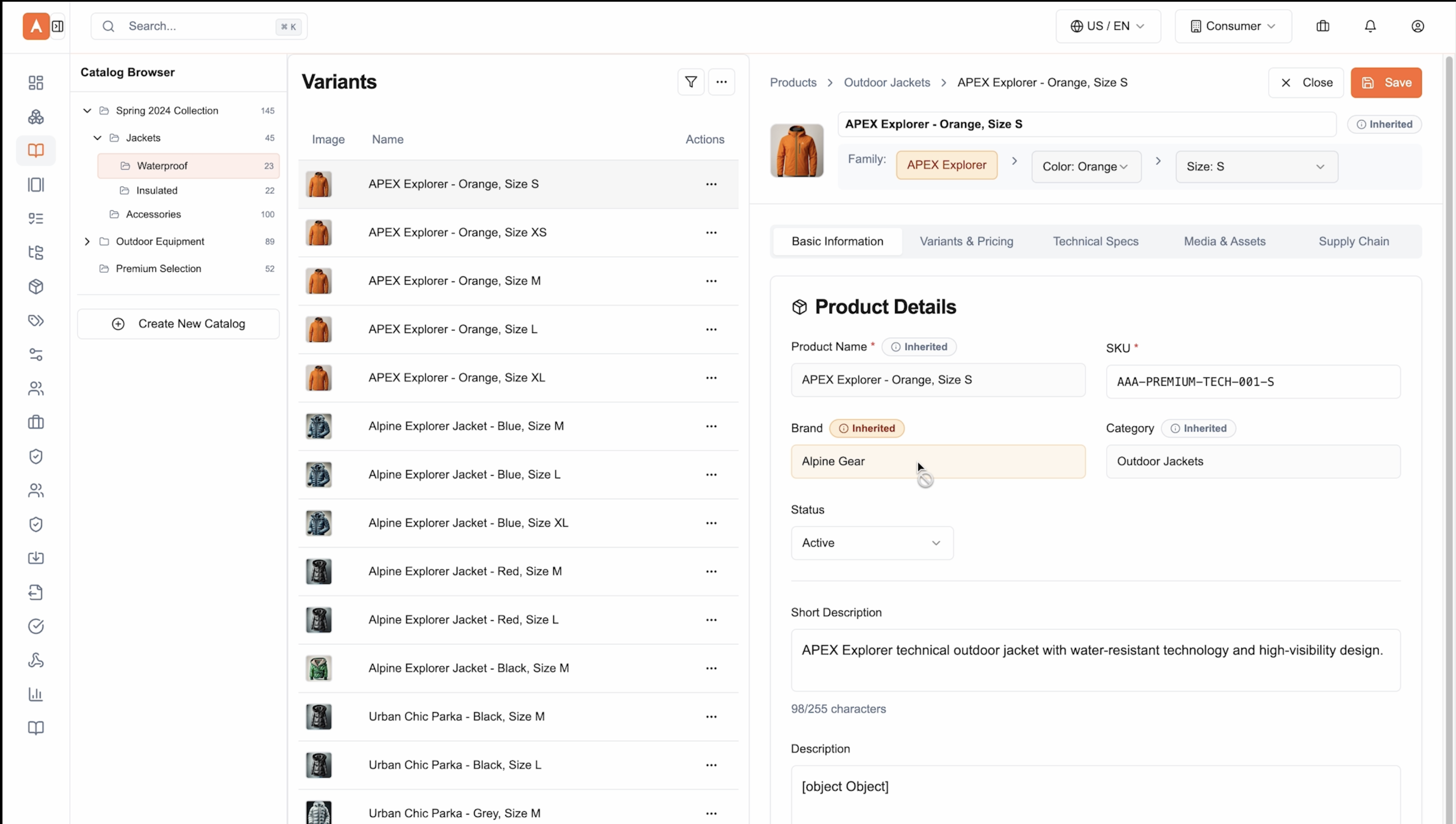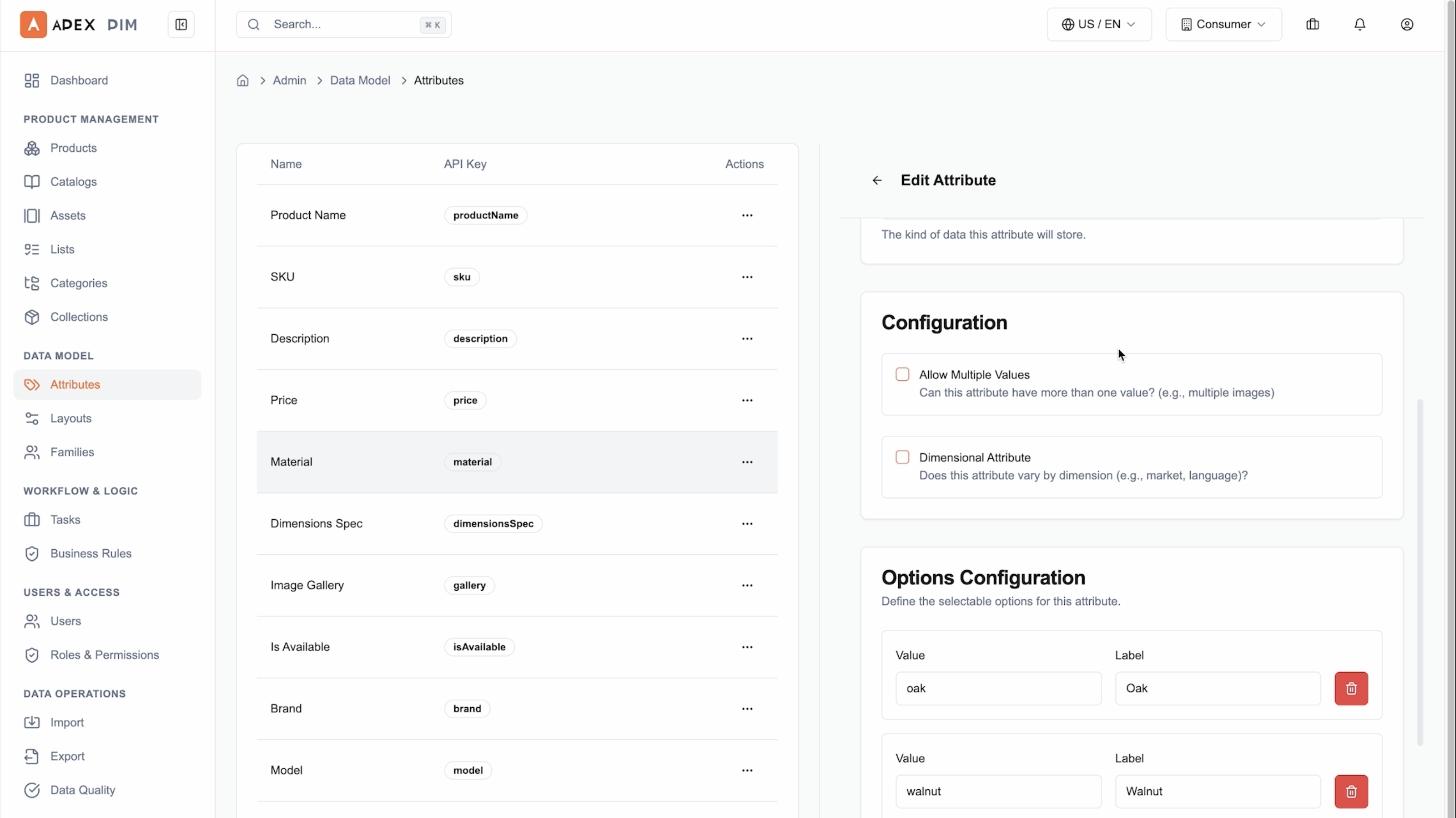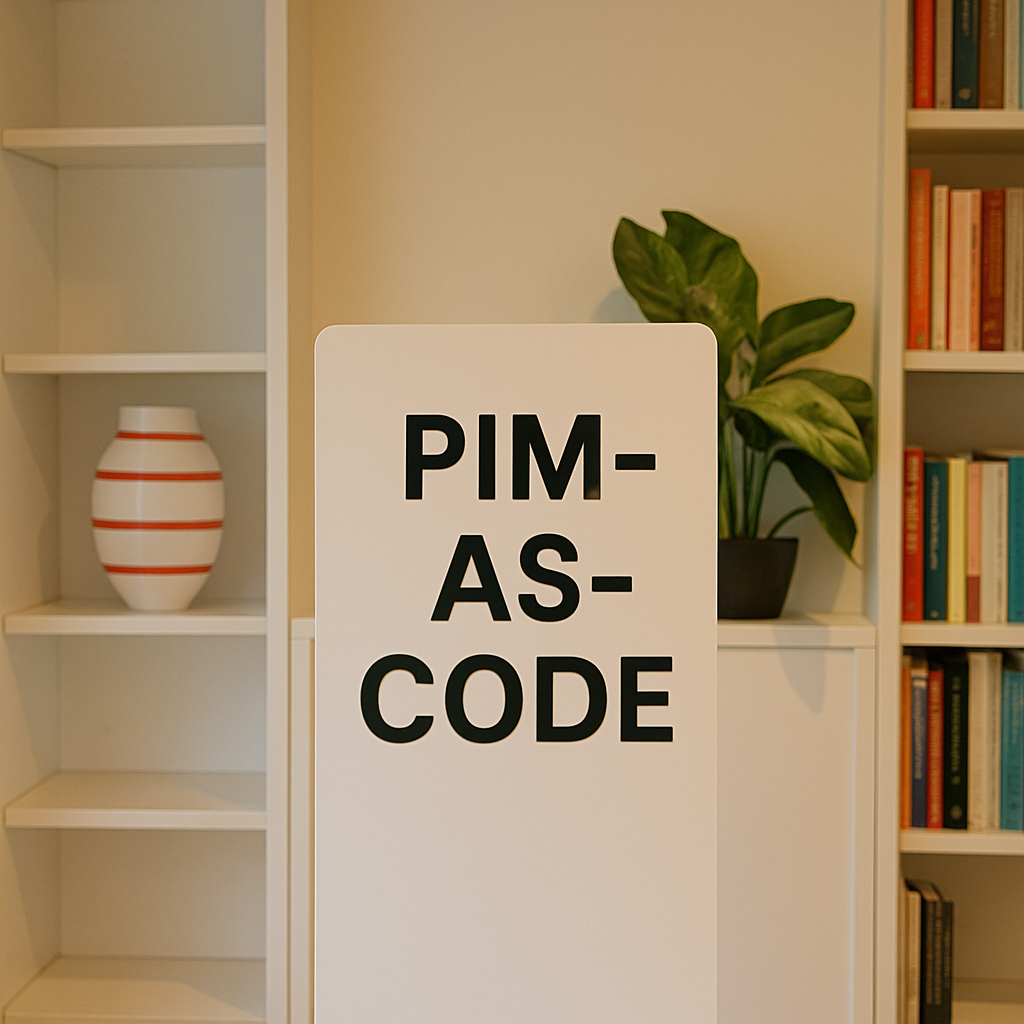The Strategic Decision
The build vs buy decision for PIM systems has traditionally been a choice between expensive custom development and feature-rich commercial platforms. However, AI-generated solutions are emerging as a compelling third option that could fundamentally change this calculation.
This analysis examines total cost of ownership, technical considerations, and strategic implications across all three approaches, providing executives with a comprehensive framework for making informed PIM investment decisions.
Key Decision Factors:
- Total Cost of Ownership over 5 years
- Technical complexity and maintenance burden
- Time-to-market and business agility
- Customization requirements and vendor lock-in
- AI-generated solutions and rapid prototyping
5-Year Total Cost of Ownership Analysis
Comprehensive TCO breakdown across build, buy, and AI-generated approaches
| Cost Component | Build Custom | Buy Commercial | AI-Generated | Notes |
|---|---|---|---|---|
| Initial Development | $500K - $2M | $50K - $500K | $25K - $100K | AI reduces development time 80% |
| Annual Licensing | $0 | $100K - $500K | $0 - $50K | AI tools may have usage fees |
| Infrastructure | $50K - $200K/yr | $0 - $50K/yr | $20K - $100K/yr | Cloud-native reduces costs |
| Maintenance & Support | $200K - $500K/yr | $20K - $100K/yr | $50K - $200K/yr | Includes ongoing development |
| Staff Requirements | 3-8 FTE developers | 1-2 FTE admins | 2-4 FTE developers | AI requires fewer specialists |
| Integration Costs | $100K - $300K | $50K - $200K | $25K - $100K | API-first reduces complexity |
| 5-Year Total | $2M - $6M | $800K - $3M | $400K - $1.5M | Significant cost advantages |
"The traditional build vs buy analysis is being disrupted by AI-generated solutions. I'm seeing organizations reduce PIM development time from 18 months to 6 weeks using AI-assisted development, fundamentally changing the economics."
Traditional Build vs Buy Analysis
Build Custom PIM: Full Control, Full Responsibility
Advantages: Complete customization, no vendor lock-in, full IP ownership, exact feature match to business requirements.
Disadvantages: High development costs, long time-to-market (12-24 months), ongoing maintenance burden, security responsibilities, compliance challenges.
Best For: Large enterprises with unique requirements, significant technical resources, and regulatory constraints that commercial solutions cannot address.
Buy Commercial PIM: Proven Solution, Faster Implementation
Advantages: Proven functionality, faster implementation (3-9 months), vendor support, regular updates, compliance features, established integrations.
Disadvantages: Licensing costs, vendor lock-in, limited customization, feature gaps, upgrade dependencies.
Best For: Organizations with standard requirements, limited technical resources, tight timelines, or need for proven reliability.
"Here's the dirty secret about buying PIM systems: you often end up building a custom PIM anyway - just in the integration layer. Your business-specific data model needs to be exposed differently than the vendor's generic schema, and PIM APIs rarely scale for public web use. So you build transformation layers, caching systems, and custom APIs. Suddenly 'buy' looks a lot like 'build' with extra licensing costs."
AI-Generated PIM: The Emerging Third Option
What Are AI-Generated PIM Solutions?
AI-generated PIM systems use large language models and code generation tools to rapidly create custom PIM applications based on business requirements. These solutions combine the customization benefits of building with the speed advantages of buying.
How AI Generation Works
Requirements Analysis: AI analyzes business requirements, data models, and workflow descriptions to generate system specifications.
Code Generation: Modern AI tools can generate complete PIM applications including database schemas, APIs, user interfaces, and integration code.
Iterative Refinement: Generated code can be rapidly modified and enhanced based on user feedback and changing requirements.
Real-World Capabilities
Current AI tools can generate:
- Complete database schemas with relationships and constraints
- REST APIs with authentication and authorization
- Administrative interfaces with CRUD operations
- Data import/export functionality
- Basic workflow and approval processes
- Integration endpoints for common systems

AI-Generated PIM Interface Examples
These screenshots demonstrate actual AI-generated PIM interfaces showing product listing and attribute management capabilities. Generated using modern AI development tools, these interfaces showcase the quality and functionality possible with current AI code generation.

AI-Generated Attribute Management Interface
The attribute management interface demonstrates sophisticated data modeling capabilities generated entirely by AI. This includes attribute type definitions, validation rules, and relationship management - core PIM functionality created through automated code generation.
AI-Generated Solutions: Advantages & Limitations
Compelling Advantages
Rapid Development: Generate working PIM prototypes in days rather than months, enabling faster validation and iteration.
Cost Effectiveness: Significantly lower development costs while maintaining customization capabilities.
Modern Architecture: AI typically generates cloud-native, API-first solutions using current best practices.
Documentation: AI-generated code often includes comprehensive documentation and comments.
Learning Curve: Generated code can serve as educational material for development teams.
Current Limitations
Complexity Ceiling: AI struggles with highly complex business logic and advanced workflow requirements.
Quality Variability: Generated code quality varies significantly based on prompt quality and AI model capabilities.
Security Considerations: AI-generated code requires thorough security review and testing.
Maintenance Uncertainty: Long-term maintainability of AI-generated codebases is still being validated.
Integration Challenges: Complex enterprise integrations may require significant manual development.
Strategic Decision Framework
When to Build Custom
Choose Build When:
- Unique business requirements that no commercial solution addresses
- Regulatory or compliance needs that require custom implementation
- Significant technical resources and budget available
- Long-term strategic advantage requires proprietary capabilities
- Existing commercial solutions lack critical functionality
When to Buy Commercial
Choose Buy When:
- Standard PIM requirements that commercial solutions address well
- Limited technical resources or tight timelines
- Need for proven reliability and vendor support
- Budget constraints favor operational over capital expenses
- Risk tolerance is low and proven solutions are preferred
When to Consider AI-Generated
Choose AI-Generated When:
- Moderate customization needs that exceed commercial capabilities
- Budget allows for custom development but timeline is constrained
- Technical team can review and maintain generated code
- Requirements are well-defined and stable
- Organization is comfortable with emerging technology adoption
"I recommend organizations start with AI-generated prototypes to validate requirements, then decide whether to enhance the generated solution or move to a commercial platform. This approach reduces risk while maintaining options."
Recommended Implementation Approach
Phase 1: AI-Generated Prototype (4-8 weeks)
Start with AI-generated PIM prototype to validate requirements, test user workflows, and establish data models. This provides tangible results while evaluating all three options.
Phase 2: Evaluation & Decision (2-4 weeks)
Use the prototype to evaluate:
- Complexity of requirements that AI couldn't address
- Commercial solution gaps identified through comparison
- Technical debt and maintenance implications
- User acceptance and workflow validation
Phase 3: Implementation Decision
Enhance AI Solution: If prototype meets 80%+ requirements, invest in enhancing generated code with security, performance, and missing features.
Switch to Commercial: If complex requirements emerge, use prototype as detailed requirements for commercial solution selection.
Full Custom Build: If unique requirements justify investment, use prototype as foundation and specification for custom development.
Risk Mitigation Strategy
This approach minimizes risk by:
- Providing working system quickly for validation
- Generating detailed requirements through hands-on experience
- Maintaining all three options throughout evaluation
- Reducing total investment if commercial solution becomes preferred
Explore complementary strategies and implementation approaches that can inform your build vs buy decision
Future Considerations
AI Evolution Impact
AI code generation capabilities are improving rapidly. Current limitations around complex business logic, security, and performance may be addressed within 12-24 months, making AI-generated solutions increasingly viable for enterprise requirements.
Hybrid Approaches
Organizations are experimenting with hybrid models:
- AI-generated core with commercial module integration
- Commercial PIM with AI-generated custom extensions
- AI-assisted development of traditional custom solutions
Vendor Response
Commercial PIM vendors are beginning to incorporate AI generation capabilities into their platforms, potentially blurring the lines between build and buy decisions.
Strategic Implications
The emergence of AI-generated solutions may:
- Reduce vendor lock-in concerns by making custom development more accessible
- Increase pressure on commercial vendors to provide better customization
- Enable smaller organizations to afford custom PIM solutions
- Accelerate PIM innovation through rapid prototyping and experimentation
"The build vs buy decision is becoming build vs buy vs AI-generate. Smart organizations are using AI-generated prototypes to de-risk their PIM investments while keeping all options open. This approach provides the best of all worlds."
Executive Summary & Recommendations
The PIM build vs buy decision has evolved beyond a simple binary choice. AI-generated solutions provide a compelling third option that can reduce risk, accelerate time-to-value, and maintain strategic flexibility.
Key Recommendations:
- Start with AI-generated prototype for requirement validation
- Use prototype results to inform final build vs buy decision
- Consider AI generation as a path to custom solutions at commercial timelines
- Evaluate all three options using total cost of ownership over 5 years
- Factor in organizational change management and technical capabilities
Organizations that embrace this three-option framework will make more informed PIM investment decisions while reducing implementation risk and maintaining strategic agility in a rapidly evolving technology landscape.
Ready to Evaluate PIM Options?
Need help analyzing your specific build vs buy vs AI-generate decision? Get expert guidance on PIM strategy, TCO analysis, and implementation planning.
Schedule Strategy Consultation
